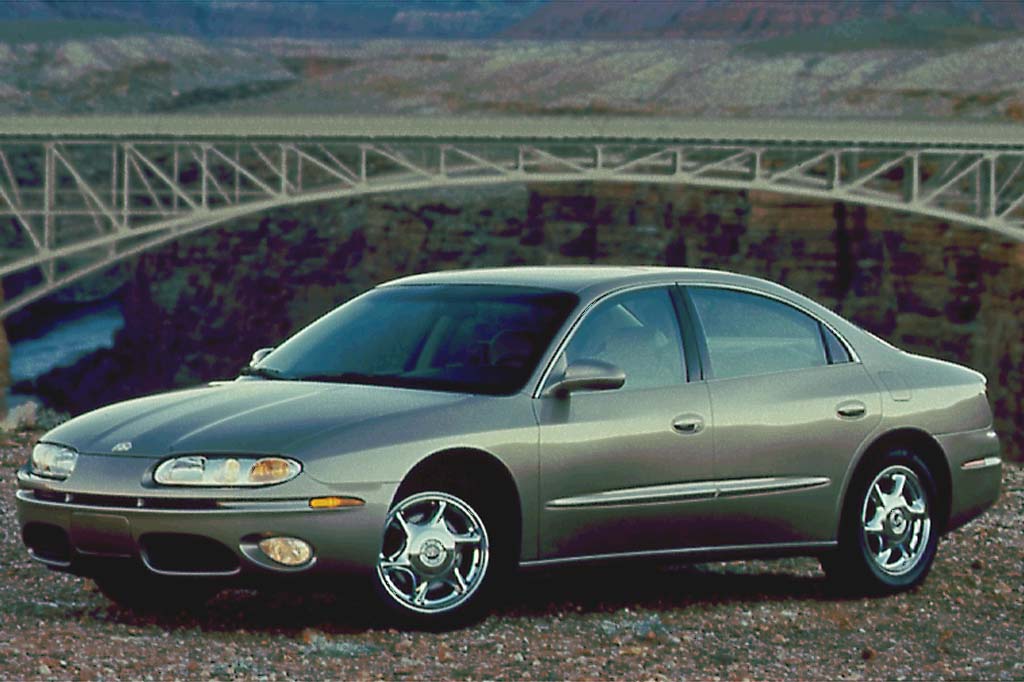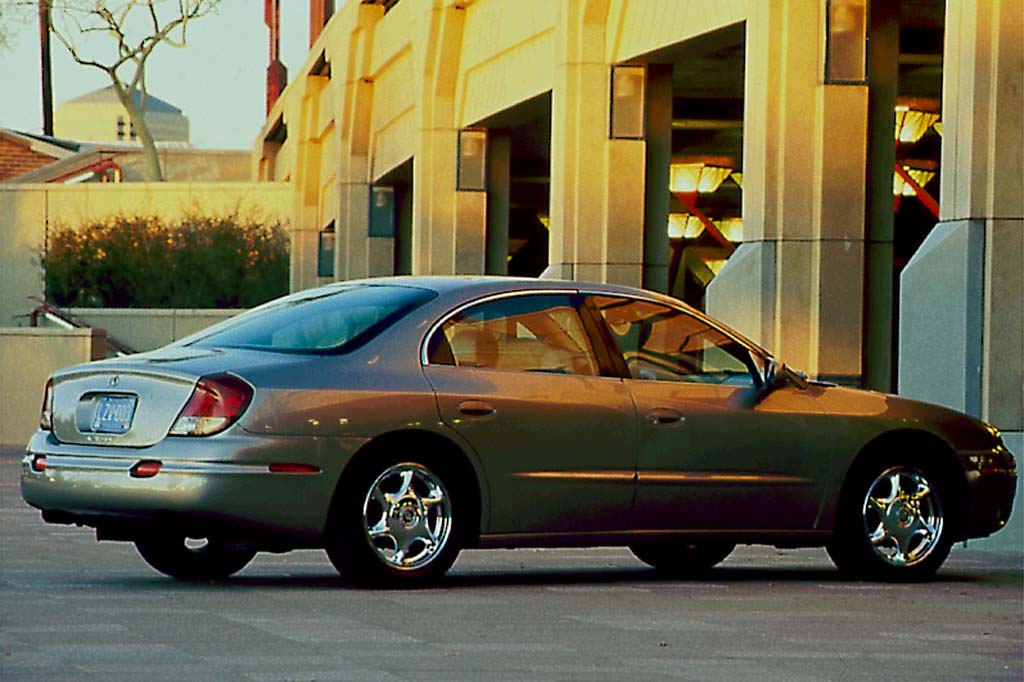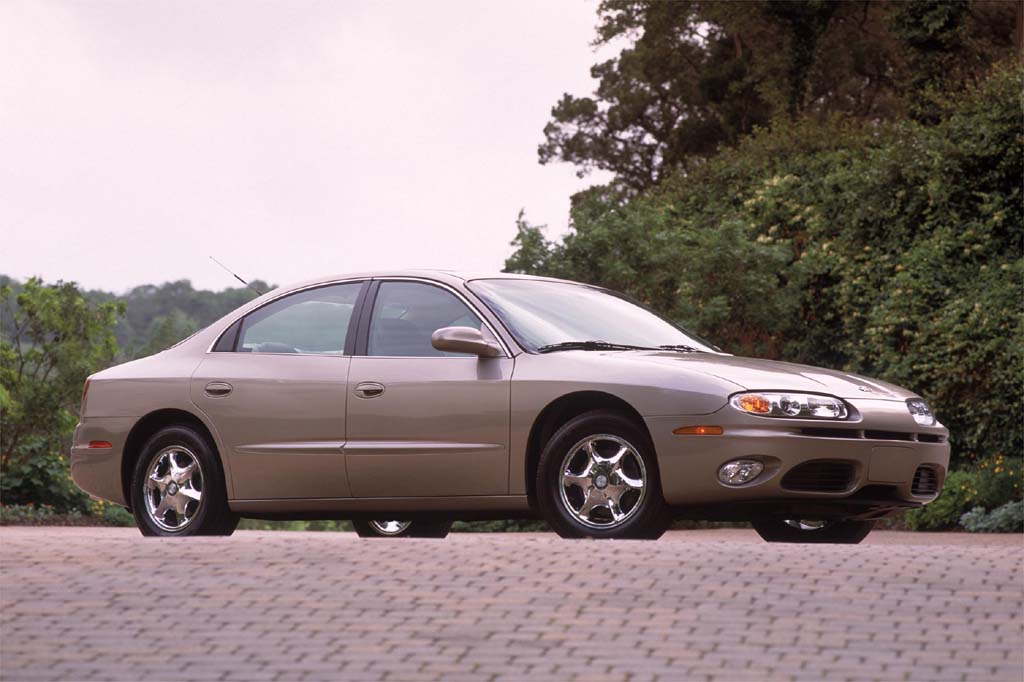| Premium midsize car; Built in USA |
|
|
| Good condition price range: $2,400 – $4,400* |

2001 Oldsmobile Aurora

2001 Oldsmobile Aurora

2001 Oldsmobile Aurora interior

2002 Oldsmobile Aurora

2002 Oldsmobile Aurora
| Pros: |
|
| Cons: |
|
Few other sedans in this class offer a V8, but an Aurora isn’t likely to tempt Lexus or BMW owners. Even so, this is a pleasant, slightly sporty sedan that should appeal to value-minded near-luxury buyers. Resale-value dropoff due to the decline of the Oldsmobile brand could produce some good buys on the used-car market.
Overview
Oldsmobile’s near-luxury Aurora was redesigned for a spring 2000 debut, as a 2001 model. In the fall, Oldsmobile’s flagship gained a standard automatic load leveling suspension. GM’s OnStar system became standard on all Auroras in fall 2000.
Smaller than the 1995-99 first-generation design in most dimensions, the 21st century Aurora shared its basic platform with the Buick LeSabre and Pontiac Bonneville. Both V6 and V8 engines were offered. The only transmission was a four-speed automatic. Certain rivals, such as the Lincoln LS and Acura TL, offered a five-speed automatic.
Seating five, the Aurora had standard front side airbags, antilock four-wheel disc brakes, automatic climate control, leather upholstery, and wood interior trim. The V8 versions rode 17-inch wheels, in place of the V6’s 16-inchers, and included traction control and Oldsmobile’s antiskid Precision Control System. Both of those systems were optional with V6 sedans.
Yearly Updates
| 2002 Aurora Oldsmobile’s flagship lost its V6 version part way into the 2002 model year, as part of GM’s phaseout of the Olds brand. A tire-inflation monitor was standard. New for 2002 was a “navigational radio” system that stored maps on CDs and gave directions via a dashboard-mounted screen or by audio instructions. Chrome exhaust tips became standard for 2002. |
| 2003 Aurora For the Aurora’s final year, the V6 engine was gone and all models used V8 power. Production came to a halt in late spring of 2003. The final 500 Auroras had Collector Edition trim with special wheels, paint, and badging. |
